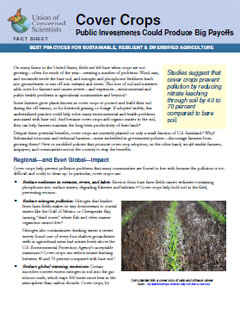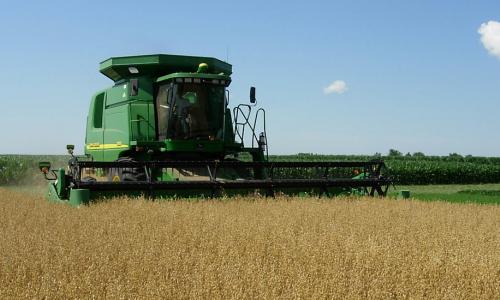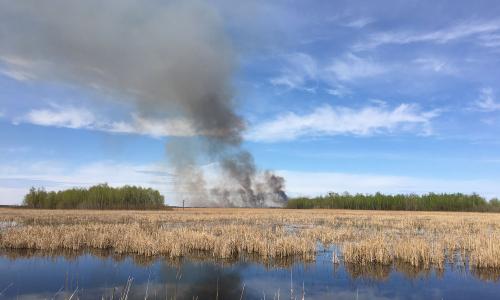On many farms in the United States, fields are left bare when crops are not growing—often for much of the year—creating a number of problems. Wind, rain, and snowmelt erode the bare soil, and nitrogen and phosphorus fertilizers leach into groundwater or run off into streams and rivers.
This loss of soil and nutrients adds costs for farmers and causes severe—and expensive—environmental and public health problems in agricultural communities and beyond.
Some farmers grow plants known as cover crops to protect and build their soil during the off-season, or for livestock grazing or forage. Commonly planted cover crops include hairy vetch, annual ryegrass, and crimson clover.
If adopted widely, this underutilized practice could help solve many environmental and health problems associated with bare soil. And because cover crops add organic matter to the soil, they can help farmers maintain the long-term productivity of their land.
Despite these potential benefits, cover crops are currently planted on only a small fraction of U.S. farmland. Why? Substantial economic and technical barriers—some embedded in government policies—discourage farmers from growing them. New or modified policies that promote cover crop adoption, on the other hand, would enable farmers, taxpayers, and communities across the country to reap the benefits.







